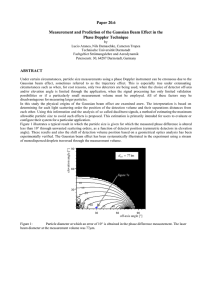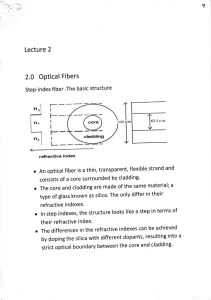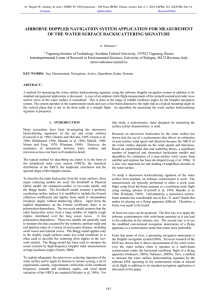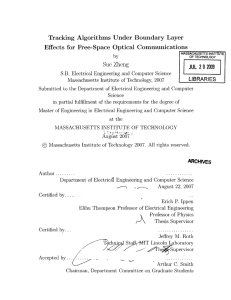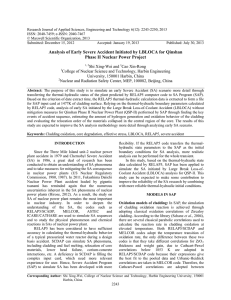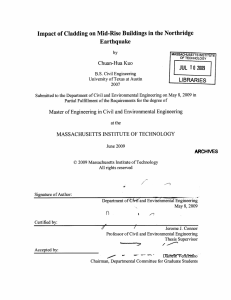CHAPTER 7 : Transmission Media Review Questions Solutions to Review Questions
advertisement
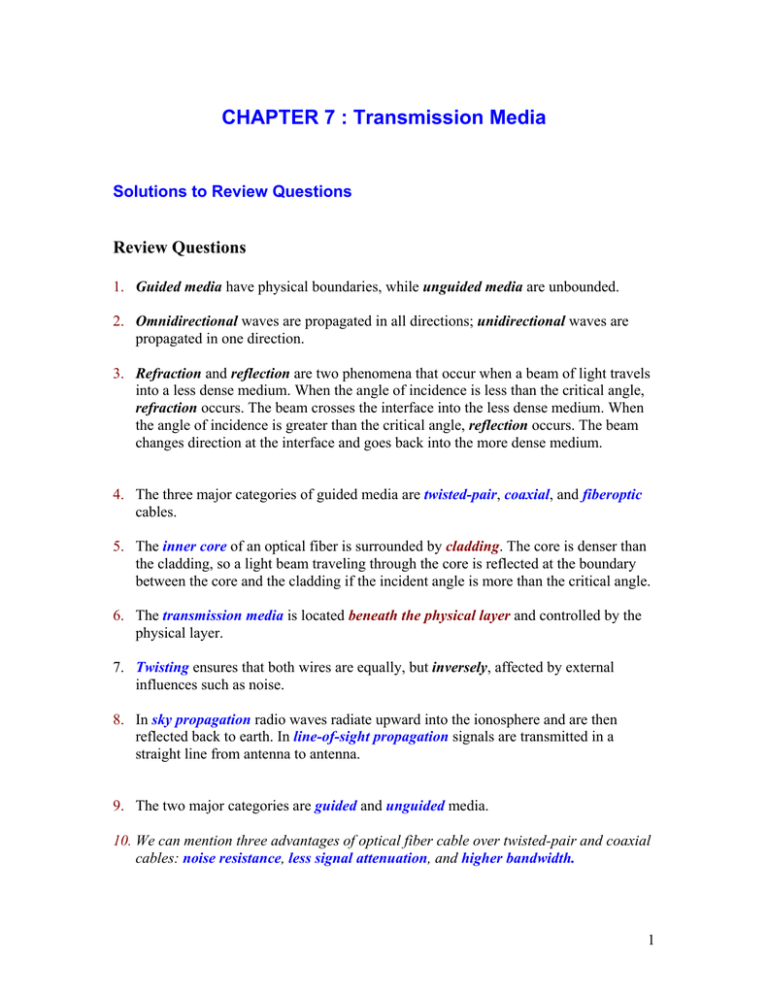
CHAPTER 7 : Transmission Media Solutions to Review Questions Review Questions 1. Guided media have physical boundaries, while unguided media are unbounded. 2. Omnidirectional waves are propagated in all directions; unidirectional waves are propagated in one direction. 3. Refraction and reflection are two phenomena that occur when a beam of light travels into a less dense medium. When the angle of incidence is less than the critical angle, refraction occurs. The beam crosses the interface into the less dense medium. When the angle of incidence is greater than the critical angle, reflection occurs. The beam changes direction at the interface and goes back into the more dense medium. 4. The three major categories of guided media are twisted-pair, coaxial, and fiberoptic cables. 5. The inner core of an optical fiber is surrounded by cladding. The core is denser than the cladding, so a light beam traveling through the core is reflected at the boundary between the core and the cladding if the incident angle is more than the critical angle. 6. The transmission media is located beneath the physical layer and controlled by the physical layer. 7. Twisting ensures that both wires are equally, but inversely, affected by external influences such as noise. 8. In sky propagation radio waves radiate upward into the ionosphere and are then reflected back to earth. In line-of-sight propagation signals are transmitted in a straight line from antenna to antenna. 9. The two major categories are guided and unguided media. 10. We can mention three advantages of optical fiber cable over twisted-pair and coaxial cables: noise resistance, less signal attenuation, and higher bandwidth. 1 Exercises 12. See Table 7.1 (the values are approximate). Table 7.1 Solution to Exercise 12 15. As Table 7.2 shows, for a specific maximum value of attenuation, the highest frequency decreases with distance. If we consider the bandwidth to start from zero, we can say that the bandwidth decreases with distance. For example, if we can tol-erate a maximum attenuation of 50 dB (loss), then we can give the following listing of distance versus bandwidth. 18. We can use the formula f = c / λ to find the corresponding frequency for each wave length as shown below (c is the speed of propagation): a. B = [(2 × 108)/1000×10−9] − [(2 × 108)/ 1200 × 10−9] = 33 THz b. B = [(2 × 108)/1000×10−9] − [(2 × 108)/ 1400 × 10−9] = 57 THz 2



